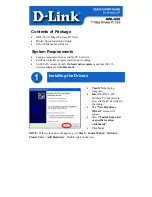
Chapter 12
Tunneling and VPNs
RUGGEDCOM ROX II
CLI User Guide
358
Viewing a List of Virtual Switches
A virtual switch interface in a router can be a routable interface when an IP address is assigned either statically
or through DHCP. The network address assigned to the virtual switch interface can be included in the dynamic
routing protocol. The interface can also call a routing update. The IP address assigned to the virtual switch can be
used as the default gateway for the end devices connected to the virtual switch interface. Network services, such
as SSH, DHCP, NTP, VRRP, etc., can be configured to run on the virtual switch interface.
Network traffic can be filtered for select virtual switch interfaces based on destination MAC address, source MAC
address, and/or protocol (e.g. iso, arp, ipv4, ipv6, etc.). If a packet meets the filter criteria, it is routed to the
appropriate destination. Otherwise, it is dropped.
When configuring a virtual switch, be aware of the following:
• Be careful when adding a VLAN interface (assigned to a switch port on a given line module) in the virtual switch.
The VLAN tag on a tagged frame received on the VLAN interface of a switch port may not be preserved when
the traffic is egressed through a routable interface (i.e. T1/E1 HLDC-ETH or FE-CM-1), which is also part of the
same virtual switch instance. However, a VLAN tag is preserved when tagged traffic is received on a routable
interface.
• Any IP address assigned to an interface becomes inactive and hidden when the interface is added to the virtual
switch. The address on the interface is reactivated after removing the interface from the virtual switch.
• Be careful when adding interfaces to the virtual switch. Any network services running on the individual
interfaces will need to be reconfigured after adding the interface to the virtual switch. For example, if a DHCP
server running on FE-CM-1 is subsequently made a member of the VirtualSwitch vsw-1, the DHCP configuration
must be changed to refer to vsw-1.
• The virtual switch is implemented in the RUGGEDCOM ROX II software. Therefore, a CPU resource is needed to
forward broadcast, multicast and unicast traffic.
• If the router is running as a firewall, the
routeback
parameter under
firewall » fwconfig » fwinterface
must
be enabled for the virtual switch interface. For more information, refer to
Section 6.9.10, “Managing Interfaces”
CONTENTS
•
Section 12.1.1, “Viewing a List of Virtual Switches”
•
Section 12.1.2, “Adding a Virtual Switch”
•
Section 12.1.3, “Deleting a Virtual Switch”
•
Section 12.1.4, “Managing Virtual Switch Interfaces”
•
Section 12.1.5, “Filtering Virtual Switch Traffic”
•
Section 12.1.6, “Managing Filtering Rules”
•
Section 12.1.7, “Managing In/Out Interfaces”
•
Section 12.1.8, “Managing VLANs for Virtual Switches”
Section 12.1.1
Viewing a List of Virtual Switches
To view a list of virtual switches, type:
show
running-config interface virtualswitch
If virtual switches have been configured, a table or list similar to the following example appears:
ruggedcom# show running-config interface virtualswitch
interface
Summary of Contents for RUGGEDCOM ROX II
Page 2: ...RUGGEDCOM ROX II CLI User Guide ii ...
Page 4: ...RUGGEDCOM ROX II CLI User Guide iv ...
Page 39: ...RUGGEDCOM ROX II CLI User Guide Table of Contents xxxix 19 5 VLANs 752 ...
Page 40: ...Table of Contents RUGGEDCOM ROX II CLI User Guide xl ...
Page 46: ...Preface RUGGEDCOM ROX II CLI User Guide xlvi Customer Support ...
Page 170: ...Chapter 5 System Administration RUGGEDCOM ROX II CLI User Guide 124 Deleting a Scheduled Job ...
Page 256: ...Chapter 6 Security RUGGEDCOM ROX II CLI User Guide 210 Enabling Disabling a Firewall ...
Page 402: ...Chapter 11 Wireless RUGGEDCOM ROX II CLI User Guide 356 Managing Cellular Modem Profiles ...
















































